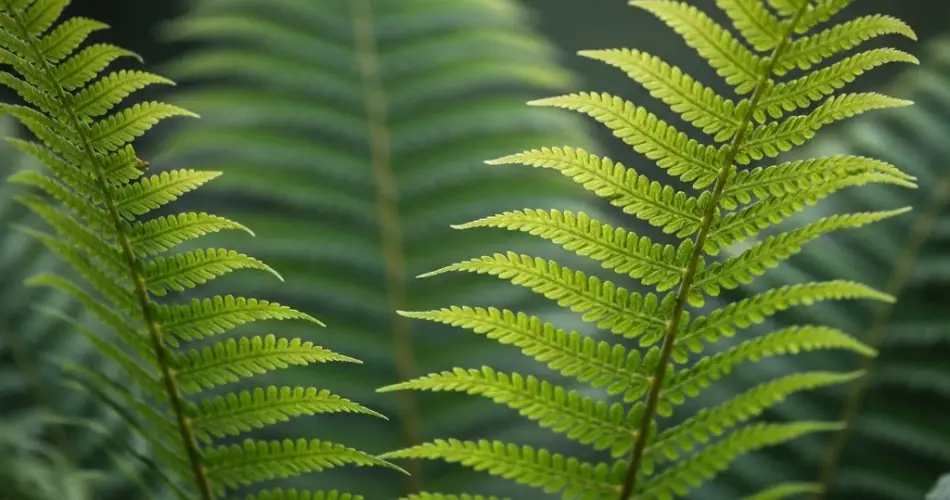Ferns are beloved indoor plants known for their lush, feathery fronds and soft green appearance that can instantly bring a sense of calm and vitality to any room. However, their beauty is matched by a sensitivity to their environment—especially the soil they grow in. Choosing the right potting mix is essential for healthy fern growth. These plants thrive in a mix that stays lightly moist, drains well, and is rich in organic matter. Whether you’re growing Boston ferns, maidenhair ferns, or bird’s nest ferns, providing the ideal potting mix is key to keeping them vibrant and thriving.
Understanding the Needs of Ferns
Before diving into soil components, it’s important to understand what ferns need from their growing medium. In their natural habitat, many ferns grow in woodland areas where the soil is loamy, well-aerated, rich in organic material, and consistently moist—but never soggy. Ferns absorb water and nutrients not just from their roots, but also partially through their fronds, which means they benefit from environments with high humidity and moist but not waterlogged soil.
A good potting mix for ferns mimics these natural conditions. The mix must retain moisture while allowing for proper airflow around the roots to prevent fungal diseases and root rot.
Key Components of the Ideal Fern Potting Mix
To create a light, moisture-retentive, and fertile potting mix for ferns, combine the following ingredients:
-
Peat Moss or Coco Coir
This forms the moisture-retaining base of the mix. Peat moss holds water efficiently and has a slightly acidic pH, which suits most ferns well. For a more sustainable option, use coco coir, which also retains moisture but is more environmentally friendly. It provides a similar texture and is free from the acidity of peat, making it suitable for a broader range of fern types. -
Perlite or Pumice
These lightweight, volcanic minerals are essential for aeration. They keep the potting mix loose and help excess water drain away quickly, reducing the risk of waterlogging. Perlite is more common and widely available, while pumice offers a similar effect with slightly better long-term structure. -
Compost or Leaf Mold
To mimic the rich forest floor, adding compost or leaf mold boosts the organic content of the potting mix. This not only provides nutrients but also encourages beneficial microorganisms that support healthy root development. It also helps maintain the slightly acidic pH ferns enjoy. -
Pine Bark or Orchid Bark (optional)
For species that like even more airflow at the roots—such as staghorn or bird’s nest ferns—add a small amount of fine pine or orchid bark. This improves drainage and adds texture, which some epiphytic ferns prefer.
A Simple DIY Potting Mix Recipe
For a balanced fern potting mix, you can combine:
-
2 parts peat moss or coco coir
-
1 part perlite or pumice
-
1 part compost or leaf mold
-
½ part pine bark (optional, for epiphytic ferns)
Mix all components thoroughly to ensure even distribution. This mix provides water retention, drainage, and fertility—the perfect trifecta for healthy ferns.
Store-Bought Options
If you prefer a commercial potting mix, look for one labeled for ferns or tropical plants. Avoid using standard potting soil meant for houseplants like succulents or cacti, as these are too coarse and drain too quickly. If you must use regular potting soil, amend it with peat, compost, and perlite to meet the needs of moisture-loving ferns.
Tips for Potting Ferns
-
Choose the Right Container: Use a pot with drainage holes to avoid standing water at the roots. Ferns prefer being slightly root-bound, so don’t use a pot that’s too large.
-
Moisture Management: Check the top inch of soil regularly. It should feel damp but not soggy. If it’s dry, it’s time to water.
-
Humidity Support: Ferns benefit from higher humidity levels. Consider placing a humidifier nearby, grouping plants together, or placing the pot on a tray filled with water and pebbles.
-
Avoid Overwatering: Even though ferns like moist soil, consistent overwatering will suffocate roots. Let the pot drain completely after watering.
Repotting and Refreshing the Soil
Ferns should be repotted every 1–2 years or when roots start circling the pot. When repotting, refresh the potting mix entirely to ensure the plant continues receiving nutrients and proper drainage. You may also trim away any dead roots or leaves at this time.
Conclusion
Creating the perfect potting mix for your ferns ensures they receive the moisture, nutrients, and aeration they need to stay lush and healthy. By mimicking their natural forest floor habitat with a combination of organic matter, moisture-retaining elements, and proper drainage, you can grow vibrant ferns in containers with ease. Whether you’re a beginner or a seasoned indoor gardener, mastering the soil mix is one of the most rewarding steps in successful fern care.



